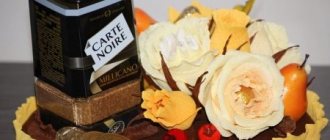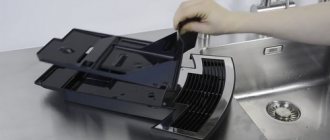I was re-reading the comments under my latest reviews of coffee grinders and realized one fact - I always write about the importance of tempering, but I do not focus on the process of distributing coffee in the basket, assuming that this is a taken-for-granted step. It would be worth highlighting separately. Which is what I do.
Often, the purchase of a semi-professional coffee maker (Gaggia Classic, Lelit, Ascaso - that’s all) happens after long-term use of a typical home espresso coffee maker with double-bottom baskets (or cream valves like Gaggia Viva) and long-term use of an entry-level coffee grinder. Agree, it is much less common to buy a conventional Classic as a first coffee maker or switch to it from an automatic coffee machine.
I think it's very easy to fall into the trap of focusing too much on the fineness of the grind and the amount of pressure applied to the tamper in this scenario. But they forget about the distribution of ground coffee in the basket and the quality of grinding. A typical user can be understood:
- He had been struggling for a long time with a homemade cone and a homemade coffee grinder in an attempt to fill the basket so that at least 40 grams would flow in 25 seconds. Therefore, having “snatched” onto more advanced equipment, he continues to act by inertia: Grinding - to a minimum
- Doses - to the maximum, fill the basket to the brim
- We press on the tempera with our whole body
So it turns out that no one pays attention to distribution, the stage is too invisible from the outside. And it is important, especially in conditions of imperfect home equipment.
Fact No. 1. The tamper only “seals” the coffee tablet; it does not remove lumps or even out the coffee.
If after grinding you have a crooked pile of ground coffee with lumps in your filter basket, then putting a tamper into it - no matter how metallic and heavy it may be - and applying at least 40 kg of force will not get a uniform tablet. Visually, yes, the surface of the coffee tablet will be smooth and horizontal, but:
- In the sector of the circle where there was less coffee, its density after tempering will also be correspondingly less. When spilled, water will rush through this segment, brewing coffee in other parts of the coffee tablet noticeably worse:
- There will be no visual lumps; those lying on the surface may even be leveled out. But at the depth of the tempered coffee tablet, pockets of greater or lesser density are formed in their place (in the picture below - on the left), and we strive for the most uniform flow (on the right):
It's like with defects in paving slabs. Have you noticed how the site, which was level in the first days after renovation, begins to move after a month or two?
The principle here is the same as in espresso. Although the surface was visually smooth before laying, in some places it was laid on dense soil, and in others on a hole filled with sand. The rains began and the water began to quickly drain through the loose sand, washing it away, but avoiding the hard ground. Actually, almost the same process occurs when there is a spill in the portafilter.
There is an easy way to check the density of the tablet after the fact - press your finger with approximately the same force on different parts of the used coffee in the holder. With a frankly crooked distribution, even a visually even tablet will not be crushed equally:
A way to check a tablet for alignment defects: on the left - bad, on the right - good. By the way, there is an idea for our Chinese friends from AliExpress. You can come up with a special testing device, a kind of “tripod” with 3-4 “legs” at once, which would create the same force on different parts of the coffee tablet.
In other words, our goal is to create an even layer of ground coffee in the basket even before using the tamper , and with the tamper we will only compact it to the point where it creates the desired resistance. Pure hydrodynamics.
Fact No. 2. Sometimes exceptions are allowed from the golden rule “maximum budget for a coffee grinder, minimum for a coffee maker.”
What I mean is that sometimes it’s enough to improve your coffee dispensing skills to improve the result, and not run out first for a new coffee grinder, swearing at your old one.
A striking recent example is the Rommelsbacher EKM 500. As I wrote in the review, it is suitable, with some reservations, for large-diameter single-bottom baskets. The main caveat is the overall small number of grind levels at which you can get a pour longer than 20 seconds. But the trick is that without proper distribution there are literally 1-2 of these degrees, but with proper distribution there are already 3-4. Plus play with a grammer - and we already have 4-5 at our disposal. And if we also choose a successful variety, like some freshly roasted Brazil Santos, which itself is denser, it will be generally fine.
This does not negate the fact that ideally for the conventional Gaggia Classic you need to buy a more advanced milk. But our whole life is about compromises, and in conditions of compromises, the EKM500 paired with the Classic can brew espresso come al bar.
Types of holders in a coffee machine
To the question “what is a holder?” The answer can be given - filter holder in coffee makers. What types of cones are used in a coffee machine?
Read also: Original birthday gift
Portafilters can be classified into several types:
- bottomless – there is no watering can, unable to regulate pressure.
- single – one spout, used for preparing 1 serving of coffee, sieve 6 – 8 g;
- double – has 2 watering cans, sieve 12-21 g;
For professional coffee machines, some manufacturers produce triple filter holders with 3 spouts. Holders are also available with or without pressure support. They differ from each other in appearance. There are many small, evenly distributed holes on the inside of the bottom of the horn. On the outside, those who support it have one pressure, without support there is a lot. The presence of holes affects the presence of foam in the coffee: at high pressure a lot of foam is formed, at low pressure - less.
According to the duration of use, portafilters are:
Different methods of distribution (distribution) of coffee in a basket
The introduction was delayed because... I wanted to describe the physics of the process using fingers and visual examples. Now let's get to the point - an overview of popular methods of dispensing coffee in an espresso basket. None of them should be considered as direct and the only correct instructions. Just try them all, look for some characteristic techniques, combine them with each other and... come up with your own method that best suits your coffee grinder (clumps/doesn’t clump, first of all), your coffee maker, your basket (they differ not only in diameter, even the profile of the walls influences), and in the end, to your hands.
Share your experience in the comments! How do you level your espresso coffee? What devices and techniques do you use?
No. 1. Leveling with finger or blade
This is not about using a coffee tablet with your finger, but about cutting off excess ground coffee flush with the level of the basket, like the Bavarians cut off beer foam.
1.1. You will need to grind coffee into a basket with a reserve, with a slide. If your coffee grinder is good and doesn’t clump, then you will get a completely homogeneous and fluffy mass. Next, it’s a matter of little things - carefully brush off the excess coffee with a straight finger, the back of a knife, a blade, a playing or bank card, flush with the top edge of the basket:
1.2. A variation of the same method with less coffee consumption is to make the slide small, and with similar movements we drive it over the coffee tablet to fill all the voids:
Minuses:
- increased consumption of valuable freshly ground coffee (a considerable part will simply go into the sink/trash bin/knockbox);
- the method is demanding on the coffee grinder - so that it does not lump, since this method does not deal with lumps in any way;
- not universal, not suitable for every basket, not for every bean, because in this method we are forced to always get a full basket of ground coffee (you can’t make it smaller).
But with the last disadvantage, a homemade leveler, made in the likeness of the Razor Tool from Breville/Bork, can help (we will number this method as 1.3):
No. 2. Vertical tapping
Not quite a full-fledged method, rather an element of the game. If you gently hit the holder on the edge of the tabletop from above, the coffee mass will compact and settle a little. And if there were any air pockets, voids, they will disappear.
Depending on the grain, grinding, and desired gramming, this element can be used in combination with other options. Either at the beginning (if for the desired gramming you need a large volume, above the edges of the basket), or at the end, before the tempering itself.
The main thing here is not to overdo it and not create the effect of an earthquake, when cracks appear in an already formed coffee tablet from too strong a blow.
No. 3. Horizontal tapping on the sides
The simplest and at the same time the most difficult method, applicable if there are no lumps in the grinding. By gently tapping the holder with a soft palm from different sides and at the same time making movements towards the impact of the portafilter itself, you can carefully distribute the coffee in the basket. Additionally, you can help yourself by bending over.
The main thing here is training, because at first all your coffee will move either towards the blow, or vice versa. Like a chef turning eggs with a wave of a frying pan without a spatula, you need to literally feel all the physics. Practice with cheap coffee so you don't feel sorry for it. And, of course, you should not use a metal tamper for blows - otherwise we will again get the “earthquake effect”, as in the point above.
All of the above methods require initially high-quality grinding, without lumps. Therefore, below are a couple of options that help not only distribute, but also get rid of lumps.
No. 4. Barista glass + life hack: Perint test cup
There are special barista glasses that are sold for money, and there are 9-ruble urine glasses from the pharmacy. The 100ml ones made by Perint are almost perfect for 58mm diameter baskets.
In general, with these cups we proceed according to the following algorithm:
- Grind coffee into it
- We close and shake, there is no need to shake up and down too much, it is better to make movements in the horizontal plane
- Unscrew it, put the holder on instead of the lid, turn it over
- Once again they shook it with radial movements to level it out, and carefully removed it.
After that, depending on the level of coffee received, we select one of the first three methods to complete the distribution.
If you also use a cup for analysis, do not press it tightly into the basket. Otherwise, when you pull out the cup, it will be difficult not to shake the holder sharply and ruin everything.
No. 5. Weiss Technique (WDT, Weiss Distribution Technique) - popular!
Yes, the method has an author, and it has a name - John Weiss. That’s why it’s called that, and not because Weiss is something translated from German, and not because Weiss is some legendary coffee shop where this method was invented.
The basic idea is simple - use a needle, a toothpick, a paper clip, a knitting needle, and finally grind it to break up all the lumps and mix not only on top, but also on the lower levels. And at the same time distribute the coffee.
It is advisable to move the toothpick as chaotically as possible. It is better not to repeat the trajectories, so as not to create extra channels in the coffee tablet. They still form minimally, of course, so upon completion it is advisable to hit using method No. 2.
To make it easier to use WDT, you need to organize something like a funnel. That is, a truncated cone that would fit tightly into the basket parallel to its walls and thereby seem to enlarge it, continuing upward:
Chinese manufacturers of coffee equipment have now begun to make such funnels (see below), but they are easier to cut from a half-liter bottle of mineral water, a paper cup of the required size, or a jar of yogurt. By the way, the bottle of Sriracha sauce fits perfectly under the 58th diameter. You can also use my favorite containers for liquid tests from the previous method.
By the way, you can print an accessory for WDT on a 3D printer; there are even ready-made models. But what I don’t like about them is that the randomness of movements is lost, the needles spin along one trajectory, increasing the likelihood of channel formation.
And a couple more methods - variations of the very first method - below:
No. 6. Stockfleth
Another “nominal” method, this time named after the Stockfleths coffee shop in Oslo. According to legend, it was invented by Tim Wendulbough, who works there and was the winner of the 2004 International Barista Championship.
By and large, this is a variation of method 1.2 with circular movements. The meaning is the same - we roll the slide along the surface of the coffee tablet to make its upper edge flush with the level of the basket:
“Orthodox Stockfles” is a rather complex method, with awkward elbow movements and different movements for right-handed/left-handed people. There are a lot of demonstrations on YouTube, look for it, I don’t see the point in retelling it in writing.
I believe that the Stockfleth instructions should not be taken as doctrine. The main thing is to understand the meaning, and you will come up with the most comfortable movements for yourself. Moreover, there are a lot of extremely similar techniques, for example, the Schindel method, which uses fingers folded into a V, which for me is much more convenient:
Types of holders in a coffee machine
To the question “what is a holder?” The answer can be given - filter holder in coffee makers. What types of cones are used in a coffee machine?
Portafilters can be classified into several types:
- bottomless – there is no watering can, unable to regulate pressure.
- single – one spout, used for preparing 1 serving of coffee, sieve 6 – 8 g;
- double – has 2 watering cans, sieve 12-21 g;
For professional coffee machines, some manufacturers produce triple filter holders with 3 spouts. Holders are also available with or without pressure support. They differ from each other in appearance. There are many small, evenly distributed holes on the inside of the bottom of the horn. On the outside, those who support it have one pressure, without support there is a lot. The presence of holes affects the presence of foam in the coffee: at high pressure a lot of foam is formed, at low pressure - less.
According to the duration of use, portafilters are:
Care
The equipment will become a reliable assistant in the kitchen and will last for many years if you take care of it and wash it on time. Cleaning the holder will not take much time. The basket is removed from the handle, the remaining pressed coffee is shaken out or removed with a special spoon, then all parts are washed under running water. It is advisable not to use detergents with a strong smell . If the portafilter is not rinsed properly, the aroma may be transferred to the drink when preparing coffee, and the result will not be very pleasant. You should use a soda solution or eco-line cleaning products, odorless and fragrance-free. Before using the horn, each part should be thoroughly dried.
The holder is a necessary item for most coffee makers. Coffee acquires a pleasant taste not only with proper preparation, but also with the use of high-quality machine parts.
What does it consist of?
The holder also consists of a basket holder, the coffee basket itself, a dispensing spout and a heat-protected handle. single holders designed for one serving of espresso (with a small basket and one spout for espresso), double ones designed for brewing two servings of espresso at once (with an increased volume of the basket and two spouts) and triple holders with three spouts (after studying the information we can say that Many coffee shop workers are abandoning the triple holder in favor of a standard set of single and double). Also, so-called holey or through holders are often encountered. They are distinguished from the above listed by the complete absence of a bottom and a place for attaching a spout. The advantages of using such a horn are a separate article altogether, so we will not talk about this superficially, without going into subtleties and nuances.
What is the card holder used for on a bank card?
Bank cards with a cardholder make their use more practical and reliable.
The holder's name is indicated exclusively on registered means of payment. But if you have a non-personalized card and need to place an order in an online store, you must enter the details into the “CARD HOLDER” line. You just need to indicate your last name and first name in English.
It makes no difference to indicate your data in the cardholder line with a capital letter or write it completely in capital characters. Information can also be entered in small letters.
Cardholder name is indicated on bank cards so that store employees can make sure that the buyer is the holder of this means of payment. The employee may ask to see an identification document, and then check the received data with the information printed on the front surface of the plastic.
Read also Bank account number: difference from card number, how to find out and why it is needed
Advantages of Cryptocurrency Hodl
The advantages of cryptocurrency hodl are obvious. If an investor expects to hold coins for several months or years, he has no need to react to temporary market crashes, be nervous about what is happening, and also update cryptocurrency rates and his own portfolio a hundred times. He knows that after some time the market situation will be much more attractive, so he can let the situation take its course.
Cryptocurrency trader
Now this is especially true when BTC is being bought by Tesla, MicroStrategy, Square and other giants of the global industry. It is obvious that, at a minimum, Bitcoin is definitely not going to die and fall to zero.
The most popular meme about cryptohodler is a still from the movie “300”. Here, hodlers are portrayed as courageous warriors who do not plan to give up even in the most unattractive market conditions.
The most popular hodle meme
What is a cardholder
The foreign term Card Holder includes two components: the first word is translated into Russian as “card”, and the second is “holder”. Based on the translation of these components, a complete translation of the English phrase cardholder means the following:
- The owner in whose name the bank card is issued.
- This term may refer to the device that contains the SIM card in a mobile device or other device that supports communication.
Holders with paper clips and self-adhesive holders
If we take branded cardboard holders, they are divided into two main types. In the first one we will see the same paper clips as in the homemade version. However, this is only at first glance. It turns out that manufacturers of holders of this type often produce paper clips for them, recommending the use only of them. Experienced collectors, however, assure that they do not feel much difference between branded paper clips and ordinary office ones.
In a self-adhesive holder, we will not see paper clips sticking out in dark stripes on a snow-white background. A special glue is applied to one of the sides of such a holder. Visually, self-adhesive holders look more solid. However, experts advise you to pay attention to the composition and quality of the glue. An insufficient degree of fastening may be discovered, and the collector will constantly have to look through the collection and glue the loose areas. Of course, most holders are of quite acceptable quality and do not require gluing.
Card holder name assignment standards
Card holder is written in English down to each character, for example, Ivan Smirnov - IVAN SMIRNOV. When personalizing, a font with identical character sizes is used. The standard is used in accordance with the conditions of international payment systems.
Abroad, sometimes questions arise regarding the transcription of a name. In this case, the standards used for issuing foreign passports are included in the database.
If necessary, the customer can correct the card holder generated by the system before issuing the payment instrument. In this case, there should not be large discrepancies with real symbols. Otherwise, the bank will not undertake the processing of the plastic card.
Rules for storing coins in holders
- • When choosing the size of the coin holder, add 1.5-2 mm to the diameter of the window.
- • When packing, always place the coin clearly in the middle.
- • Observe storage conditions. Large temperature changes must be avoided to prevent condensation from appearing. Protect exhibits from direct sunlight and falls. Even the most durable holder can deteriorate over time.
- • Before placing the coin in the holder, lightly wipe it with alcohol, let it dry and close it. It is advisable to do the procedure with cotton gloves.
No. 7. North South East West
Essentially the same version 1.2, but wrapped in a mnemonic name. Well, to make it easier to remember. We make leveling movements:
- from top to bottom and back
- from right to left and back
This method is also sometimes called the Schomer technique, named after its creator, David Schomer from Seattle. Perhaps the oldest of the named methods, Shomer actively trained baristas and wrote books back in the late 80s and early 90s.
What details are needed to make a payment using a card?
To make an online purchase, you will have to fill out a form on the online store site, providing the following details of the plastic tool:
- Bankcard number. These are large convex symbols located on the front surface. Please note that the card number is not the number of the personal account to which it is attached.
- If the means of payment is registered, a cardholder is registered.
- Validity. The month and year are located directly below the long number.
- On the reverse side there are three numbers, which are the security code (CVC2 or CVV2).
- An SMS message will be sent to your phone number, which you need to enter in the appropriate field.
How often should I descale my coffee machine?
Manufacturers and specialists who repair such equipment recommend descaling the coffee machine once a month. If hard water flows from the tap, the coffee machine must be decalcified as needed. In regions with soft water, this procedure should be carried out once every 4-5 months.
Interesting materials:
How to transport a guitar on an S7 plane? How to transport cats on a plane? How to transport medicines on an airplane abroad? How to transport medicines abroad? How to transport a one-year-old child on an airplane? How to transport formula on an airplane? How to reboot Honor 10i? How to reload a cartridge? How to restart the Evotor online cash register? How to reboot Tenda router?
Which cards have a card holder?
Card holder is not registered on every piece of plastic. According to the types of information about the owner indicated on the surface, payment instruments are divided into registered and non-registered.
The customer's name must be included in the account opening agreement. Registration and issuance of individual payment means card holder takes about 2-3 days.
Anonymous cards are issued instantly and are immediately issued to the customer at the bank simultaneously with the opening of a personal account.











